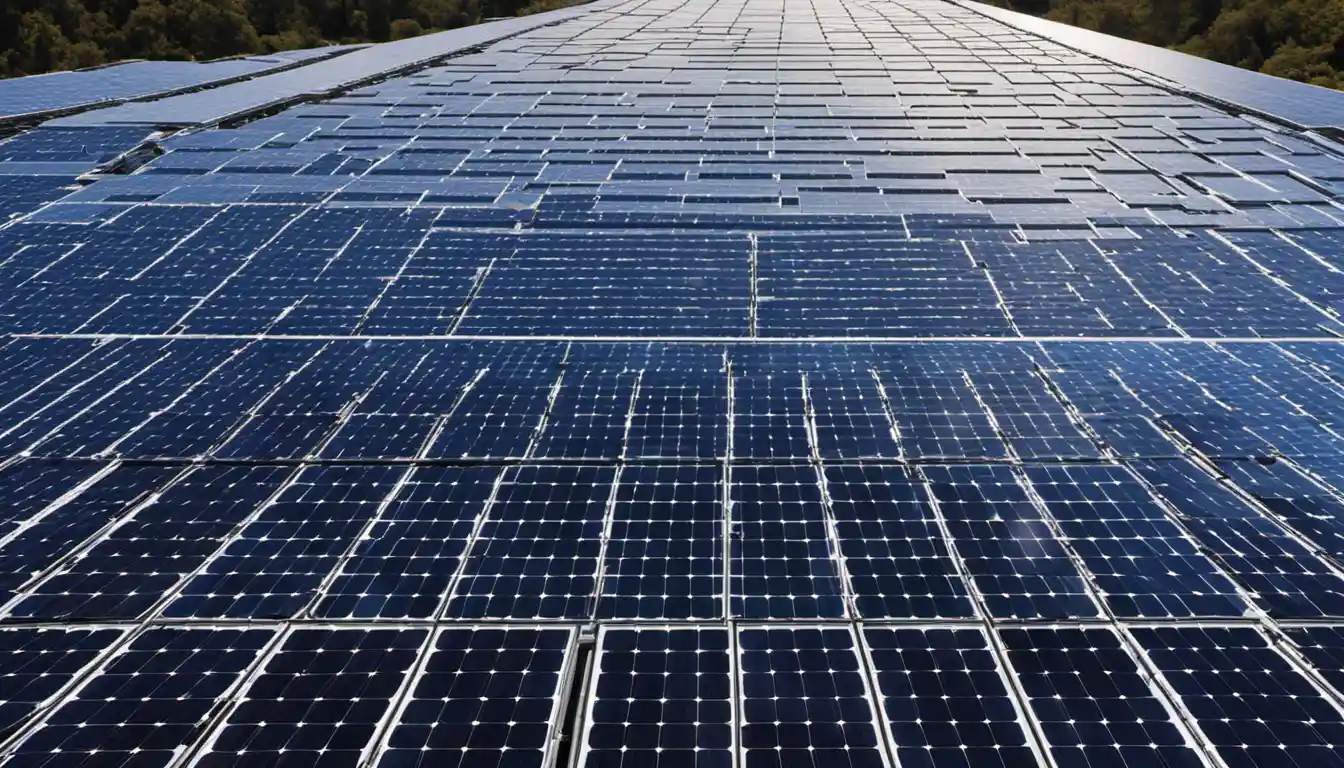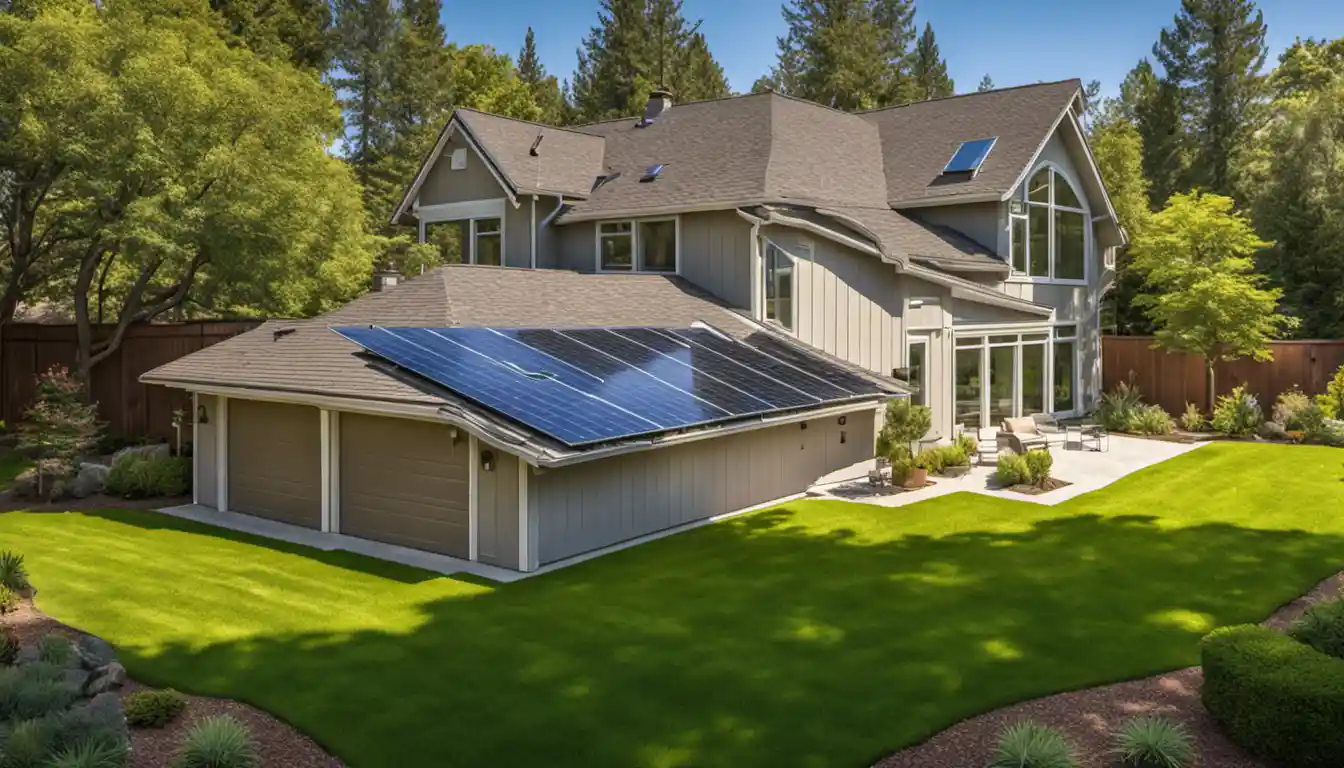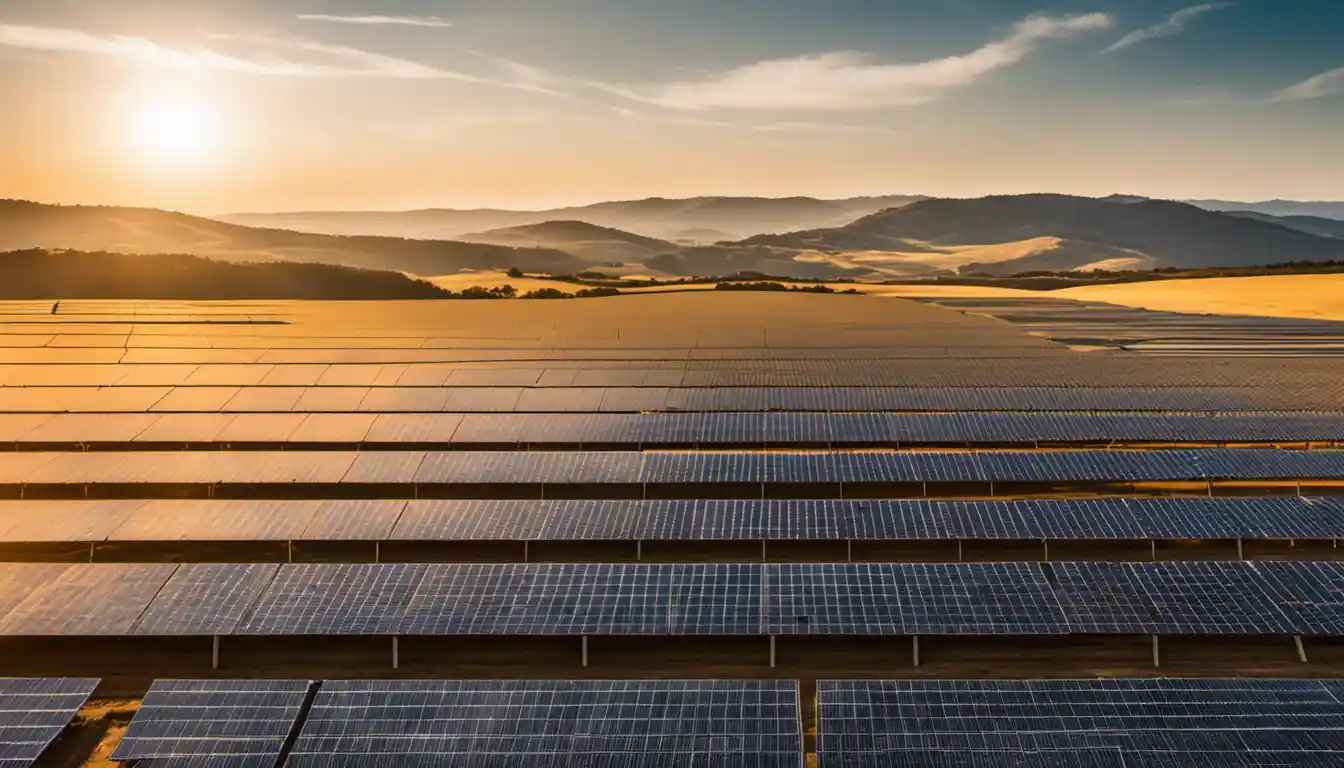Understanding Polycrystalline Solar Panels
Polycrystalline solar panels typically have a lifespan of around 25-30 years. However, this doesn’t mean they stop producing electricity after this period; it just means their energy production might decrease significantly, usually below 80% of their original capacity.
Definition and Manufacture of Polycrystalline Solar Panels
Polycrystalline solar panels, as their name suggests, use cells composed of multiple small silicone crystals in their construction. These lightweight and eco-friendly silicon panels are easier and less expensive to produce compared to their counterpart – the monocrystalline solar panels. But, as you’ll see in this guide, low production cost doesn’t mean compromised longevity.
Appearance and Efficiency of Polycrystalline Solar Panels
Often recognized from their distinctive looks – a mix of blues and silvers – polycrystalline panels deliver an appealing aesthetics to your roof while utilizing sunlight. However, the polycrystalline solar panel efficiency lags a bit compared to monocrystalline panels, especially under high heat conditions. But are they equal in terms of lifespan? Let’s dive into it.
Lifespan of Polycrystalline Solar Panels
While the burning question “how long do polycrystalline solar panels last?” reverberates in your mind, let me assure you that these solar power providers are designed with durability in mind.
Expected Lifespan and Recyclability
An average polycrystalline solar panel lifespan runs comfortably between 25 and 30 years, just like its monocrystalline cousin. But, the lifespan doesn’t indicate its death, rather a drop in efficiency under 80% of its initial capacity. It’s like that old, reliable car of yours that still runs but doesn’t pounce on the road like it used to.
One beautiful aspect of polycrystalline solar panels is that they’re mostly recyclable, ensuring a dozen extra years of less-intense electricity generation.
Comparison: Lifespan of Monocrystalline vs Polycrystalline Solar Panels

The decision between monocrystalline and polycrystalline is usually an economic one. Both share a similar lifespan, but monocrystalline panels are often pricier due to their higher efficiency. In contrast, polycrystalline panels are budget-friendly and could be the best choice when usable space isn’t a constraint.
Factors That Influence Polycrystalline Solar Panel Lifespan
While we’ve established the average lifespan, several factors can impact how long polycrystalline solar panels last.
Environmental Factors Affecting Panel Life Span
Ever wondered why your friend in Arizona replaced his solar panels before you did in Seattle? Credit it to the climate. Extreme temperature changes, stormy weather, and excessive heat can gradually degrade your panels, affecting the polycrystalline solar panel lifespan.
Effect of Temperature on Polycrystalline Solar Panels
Higher temperatures diminish the efficiency of polycrystalline panels more than their monocrystalline counterparts. So, if you’re living in an excessively hot region, a proper cooling system can help extend the lifespan of your panels.
Extending the Life of Your Polycrystalline Solar Panels
Given the investment, you’d want to squeeze every drop of sunlight for the longest time possible, right? Well, with a bit of care and caution, you can.
Regular Inspections for Longevity
Scheduling regular inspections can catch potential issues early, extending the lifespan. A small crack or malfunction might not seem much now, but these could snowball into significant problems down the line if ignored.
Installation of Backup Battery

Adding a backup battery system can work wonders. During peak sunlight hours, rather than overworking your panels, excess power can be stored in these batteries, decreasing wear and tear and increasing the lifespan.
Necessary Cleaning and Maintenance
Dust, debris, and bird droppings can significantly decrease a panel’s efficiency, leading to an overworked system and decreased lifespan. A cleaner panel is a more efficient, longer-lasting panel.
(For more details on polycrystalline solar panels, visit our comprehensive page on polycrystalline solar panels)
The Cycle of Polycrystalline Solar Panels
With all these years behind them, let’s explore what happens to these hard workers after their retirement.
What Happens to Solar Panels Post-Lifespan?
When you’ve soaked every last bit of sunlight, your solar panels don’t have to end up in a landfill. Used panels are generally recyclable and can be repurposed for producing thermal heat or building new panels.
Disposal and Recycling of Old Solar Panels
Thanks to the recyclable silicon cells, solar panels can be efficiently disposed of and recycled, making this a green energy production method from start to finish.
Polycrystalline Solar Panel Costs and Returns
By now, you must be thinking about the economic aspect of investing in these panels. Are they worth it?
Initial Costs and Power Output

While they might cost a bit more upfront than traditional power sources, in the long run, they are a more economical and eco-friendly solution. Despite their lower initial power output compared to monocrystalline panels, polycrystalline solar panels provide a significant return on investment.
Panels’ Average Lifespan and Their Investment Return
Given their long lifespan and constant power generation, these panels eventually pay for themselves through the course of their lifetime, and then some!
Frequently Asked Questions
Do Solar Panels Lose Efficiency Over Time?
Yes, although not drastically. A polycrystalline solar panel simply loses about half a percent of its efficiency every year. So, at the end of 25 years, you’re still looking at 87.5% efficiency.
How Long Does it Take for Solar Panels to Pay for Themselves?
This depends on your local electric rates and sunlight exposure, but an average takes around 7-8 years.
What Happens to Solar Panels After Their Useful Lifespan?
While the efficiency decreases considerably post-lifespan, panels can still generate power and are mostly recyclable.
I hope this guide helps answer the question: “how long do polycrystalline solar panels last?” Meanwhile, the future of solar energy looks sunny, with constant research to increase the efficiency and lifespan of solar panels. Embrace the solar revolution and add a touch of green to your power consumption!



